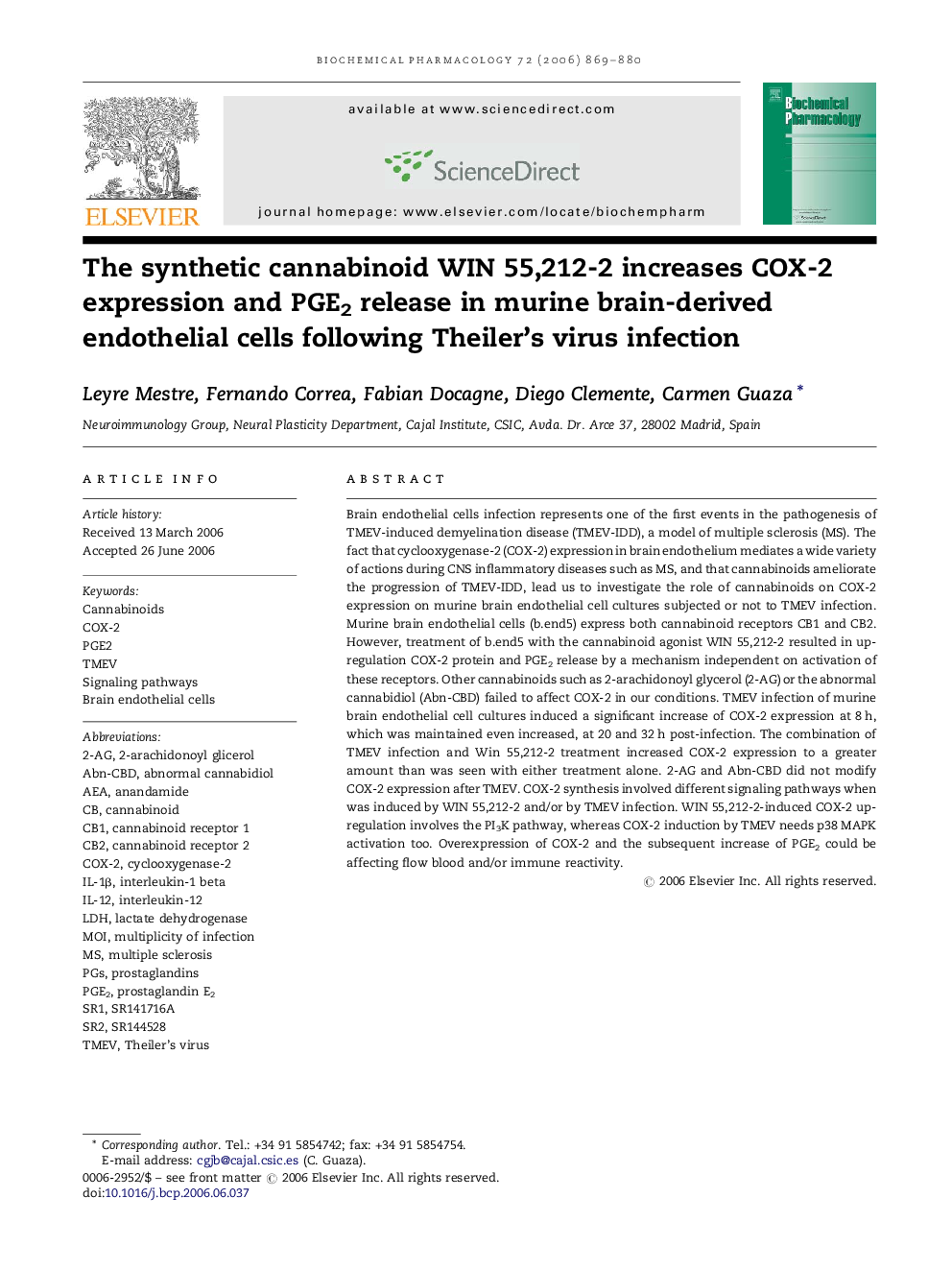| Article ID | Journal | Published Year | Pages | File Type |
|---|---|---|---|---|
| 2515044 | Biochemical Pharmacology | 2006 | 12 Pages |
Brain endothelial cells infection represents one of the first events in the pathogenesis of TMEV-induced demyelination disease (TMEV-IDD), a model of multiple sclerosis (MS). The fact that cyclooxygenase-2 (COX-2) expression in brain endothelium mediates a wide variety of actions during CNS inflammatory diseases such as MS, and that cannabinoids ameliorate the progression of TMEV-IDD, lead us to investigate the role of cannabinoids on COX-2 expression on murine brain endothelial cell cultures subjected or not to TMEV infection. Murine brain endothelial cells (b.end5) express both cannabinoid receptors CB1 and CB2. However, treatment of b.end5 with the cannabinoid agonist WIN 55,212-2 resulted in up-regulation COX-2 protein and PGE2 release by a mechanism independent on activation of these receptors. Other cannabinoids such as 2-arachidonoyl glycerol (2-AG) or the abnormal cannabidiol (Abn-CBD) failed to affect COX-2 in our conditions. TMEV infection of murine brain endothelial cell cultures induced a significant increase of COX-2 expression at 8 h, which was maintained even increased, at 20 and 32 h post-infection. The combination of TMEV infection and Win 55,212-2 treatment increased COX-2 expression to a greater amount than was seen with either treatment alone. 2-AG and Abn-CBD did not modify COX-2 expression after TMEV. COX-2 synthesis involved different signaling pathways when was induced by WIN 55,212-2 and/or by TMEV infection. WIN 55,212-2-induced COX-2 up-regulation involves the PI3K pathway, whereas COX-2 induction by TMEV needs p38 MAPK activation too. Overexpression of COX-2 and the subsequent increase of PGE2 could be affecting flow blood and/or immune reactivity.
